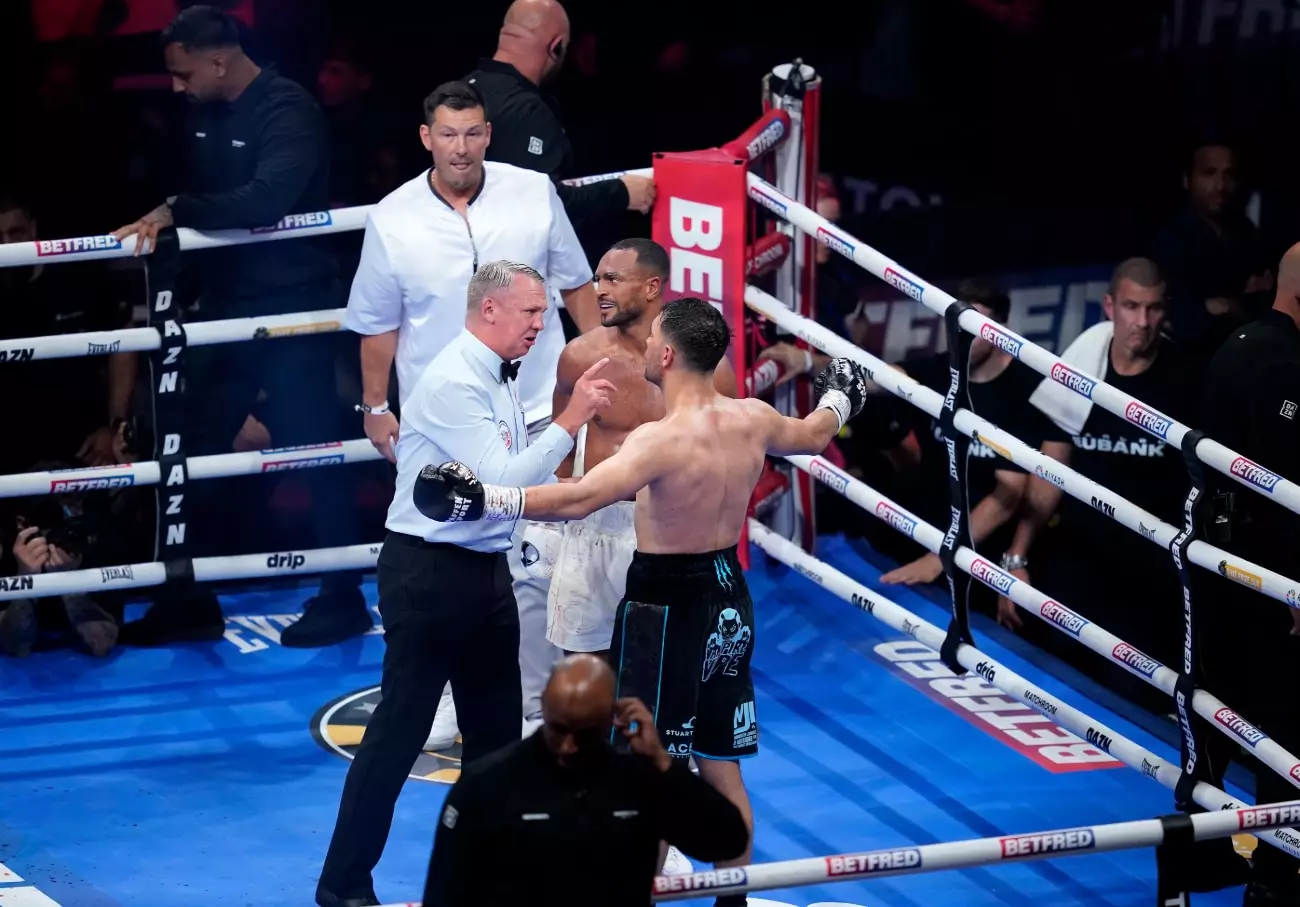In the world of professional boxing, few moments evoke as much disappointment as a bout cut short unexpectedly. The recent clash between Jack Catterall and Harlem Eubank epitomized this frustration. Instead of a dynamic exchange of skills and strategy, fans were subjected to a chaotic, scrappy affair marred by accidental head clashes and messy exchanges. When the fight was stopped prematurely due to a severe cut inflicted upon Catterall, many viewers mourned the loss of what could have been a compelling contest. It was a reminder that in boxing, unpredictability can be both a blessing and a curse, but when the outcome hinges on accidental injury, satisfaction diminishes.
The incident underscored one of boxing’s enduring dilemmas—how to manage injuries in a sport where resilience and toughness are celebrated. While safety should always take precedence, many aficionados argue that fights eliminated due to unfortunate accidents can feel like missed opportunities for genuine competition. Catterall’s victory under such circumstances leaves a bittersweet feeling; a hard-earned win overshadowed by the disappointment of an uncompleted narrative. This scenario highlights the inherent risks of a contact sport—sometimes, a fight’s final chapter is written not by skill, but by unforeseen misfortune.
A Clear Shift in Strategic Expectations
What could have been an energized, tactical battle instead devolved into a frustrating mess. Eubank’s reluctance to engage and a seemingly cautious approach contributed to the sluggish pace that fans found uninspiring. Though Eubank has shown flashes of promise, his approach on fight night appeared overly conservative—perhaps a strategic choice to avoid exchanges where he feared injury or damage. Conversely, Catterall demonstrated qualities of perseverance and resilience, consistently pressing forward despite the chaos.
Promoters and commentators have expressed mixed feelings about the fight’s stoppage. Eddie Hearn, a seasoned observer and promoter, defended the decision but also hinted at a possible bias: “The cut was severe, and safety comes first,” he said. However, his comments also reveal a subtle desire to move on swiftly—favoring the spectacle of a big, anticipated fight over a drawn-out, uncertain return to the ring. Hearn’s acknowledgment that Catterall “was starting to show his quality” suggests that the real potential of the bout was just beginning to emerge before the curtain fell prematurely. This dichotomy exposes how strategic interests and promotional ambitions often influence the fate of fighters and fights.
The Future of Jack Catterall and the Lightweight Division
Catterall’s victory, awarded via technical decision, places him in a promising position. Now, at 31-2 (13 KOs), he stands on the cusp of elite status within the lightweight division, which is currently at a fever pitch. Promoters are already eyeing high-profile bouts, with Catterall’s name on the lips of major players like Ryan Garcia, Rolly Romero, and Devin Haney—each capable of elevating his career to the world stage.
The division is undeniably vibrant, characterized by a blend of rising talents and established contenders eager to stake their claim. For Catterall, the logical next step appears to be a shot at a major world title or at least a bout against an opponent with a substantial reputation. With his recent win and top 10 rankings in both the IBF and WBA, he’s positioned to capitalize on momentum. Yet, the question remains: will this momentum be marred by the unpredictable nature that has so often defined this sport? Will Catterall’s journey be a smooth ascent, or will injuries and unpredictable outcomes continue to interfere with boxing’s inherent unpredictability?
Harlem Eubank’s Uphill Battle
Eubank’s inability to shine in this high-profile matchup spells a setback rather than a breakthrough. Once seen as a promising talent, his less-than-impressive performance raises questions about his readiness for top-tier competition. The losses and lackluster performance could force him to go back to the drawing board—reevaluating his strategy, mentality, and approach to the sport.
For Eubank, this defeat might serve as a critical lesson in resilience; boxing is as much about mental toughness as it is physical ability. The prospects for resurrection are there, but they demand a recalibration of tactics and perhaps a more aggressive mindset. The division’s depth means that for fighters like Eubank, there is little room for error if they wish to stay relevant. His future hinges on how effectively he can learn from setbacks and demonstrate that he possesses the qualities necessary to thrive amid the fierce competition of modern boxing.
This bout exemplifies both the unpredictable chaos and the strategic opportunism that define contemporary boxing. While injuries and accidents may decide outcomes on occasion, the sport’s core remains rooted in resilience, ambition, and the relentless pursuit of greatness. The journey ahead for fighters like Catterall and Eubank will test their grit, adaptability, and commitment to becoming true champions.


Leave a Reply